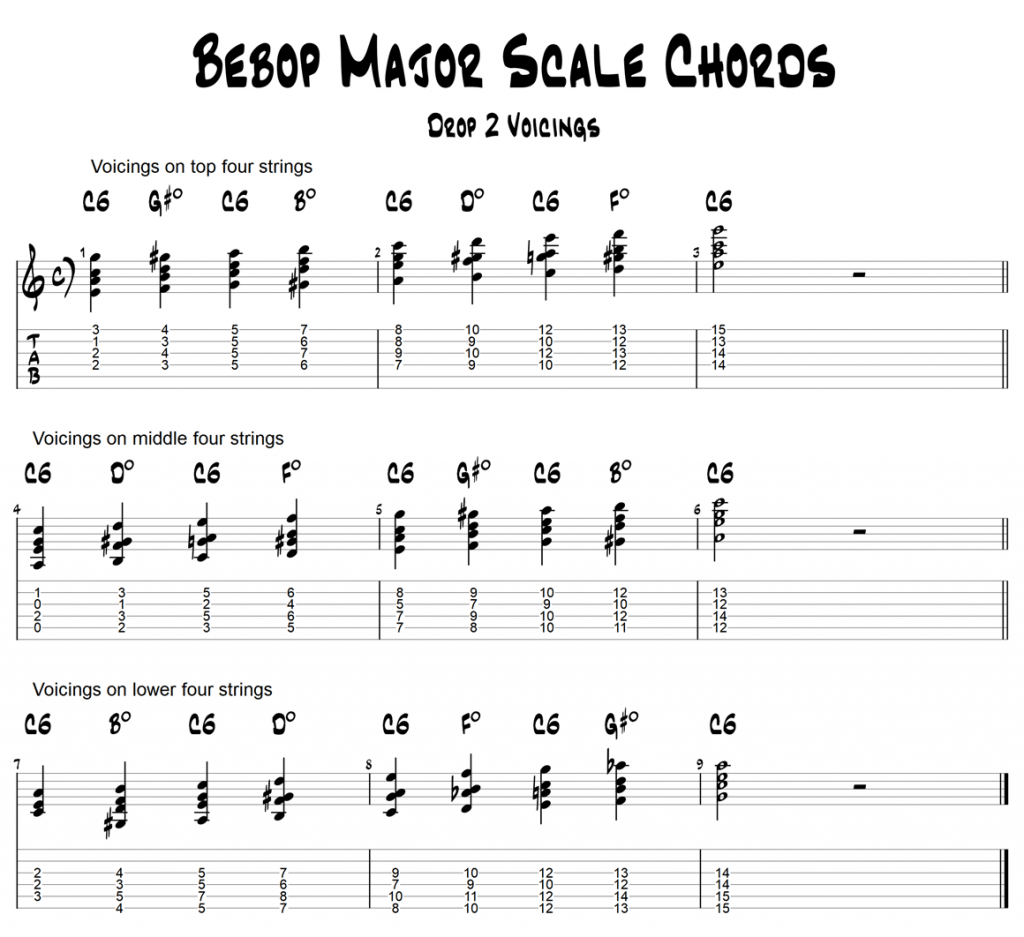
The scale is constructed like this: Root, 2nd, 3rd, 4th, 5th, b6, 6th, 7th.
From a root note of C this would give you the following: C D E F G Ab A B
The Bebop major scale adds an extra note to the above giving us this series of notes:
C D E F G Ab A B (C)
As the bebop scale now gives us an eight-note (rather than a seven-note) scale, we have to re-think our harmonisation approach a little.
Harmonisation Comparison
The regular major scale gives us the following 7th chords when harmonised:
Cmaj7 – Dm7 – Em7 – Fmaj7 – G7 – Am7 – Bm7b5 – (Cmaj7)
The bebop major scale works differently than the above when we harmonise it however, and let’s first examine why this is the case.
If we construct four note chords (building them in thirds) the bebop scale actually gives us alternating major 6th and diminished chords as seen here:
You’ll see that instead of the rising progression of different diatonic 7th chords we saw with the regular major scale, the bebop major scale now just gives us four inversions of a tonic major 6th chord each one separated by a diminished 7th chord. The diminished chords themselves are really all the same chord too, as each one is just an inversion of the previous one:
Ddim7 = D F Ab B
Fdim7 = F Ab B D
Abdim7 = Ab B D F
Bdim7 = B D F Ab
What this finally produces is therefore a series of alternating Major 6th and Diminished 7th chords.
The above musical example uses close-position voicings which are very difficult to play on guitar if not impossible, however if we re-voice the chords as Drop 2 voicings, then the whole harmonisation becomes much easier to play.
Here are Drop 2 voicings arranged for three strings sets (each of four adjacent strings)
Practice Notes
Take each string set above and practice the various voicings along the fingerboard. You’ll find that all the diminished voicings are exactly the same chord shape (per string set)
You may also note that the major 6th voicings are ones that seem familiar if you’ve worked on Drop 2 chords before. They are exactly the same as Am7 Drop 2 voicings. The reason for this is that Amin7 and Cmajor6 are in fact the same chord (just two different names)
When you play the above chords, especially on the top four and middle four strings you’ll likely hear passages that sound very like players such as Wes Montgomery and Joe Pass. They used chord movement like this a lot in their playing.
In the next lesson, we’ll examine how to convert all the above to minor keys.
Happy Practicing!
Pete




